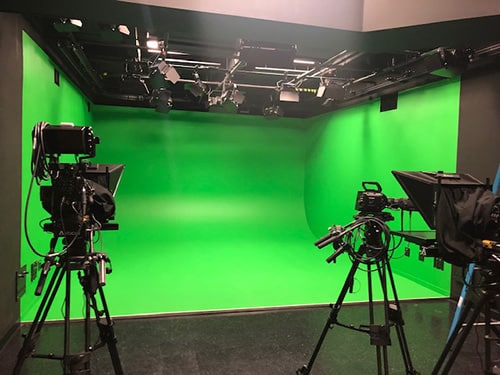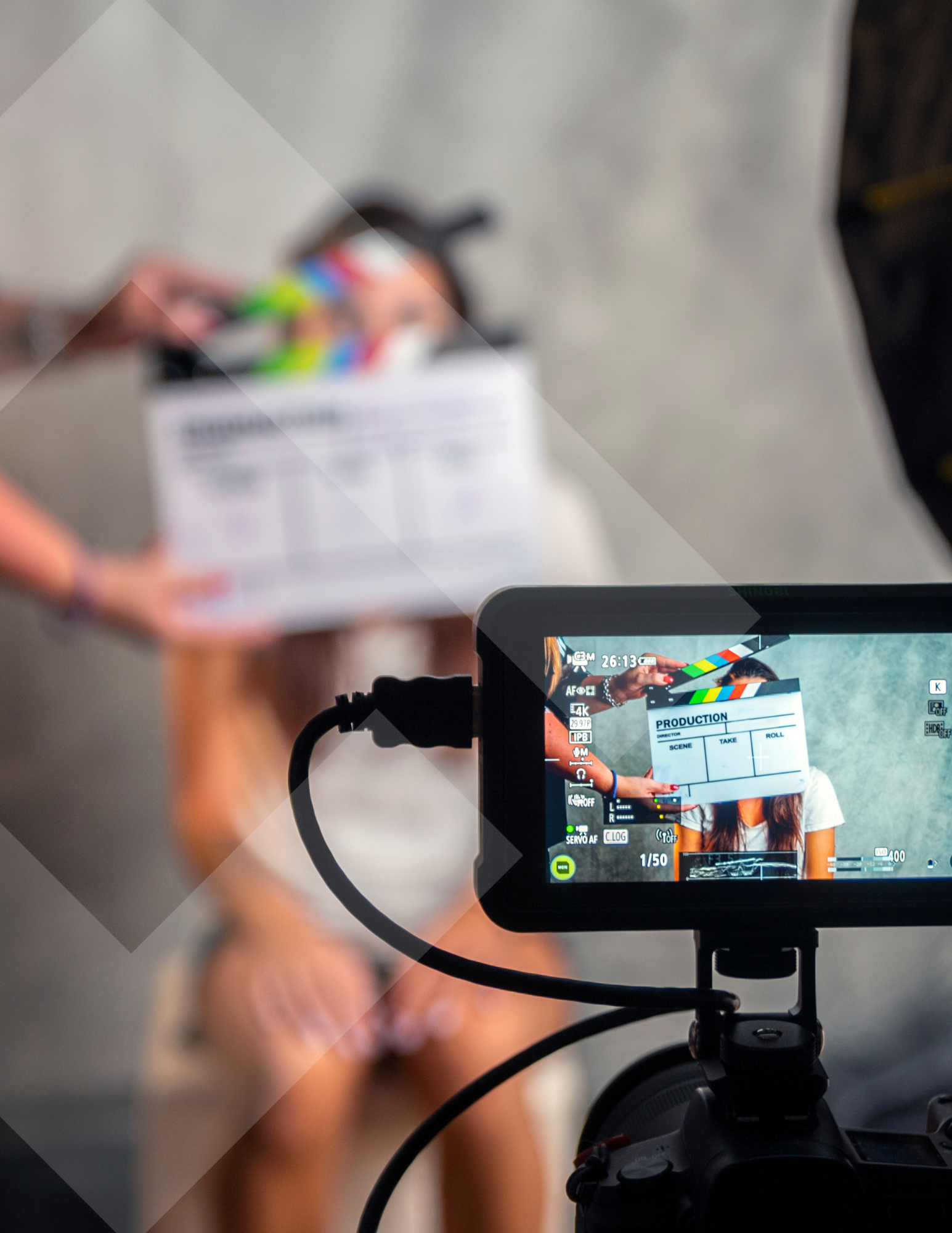Discovering the most up to date Patterns in Video Production for 2025
As we approach 2025, the video production landscape is poised for significant development, identified by improvements in enhanced reality and AI-driven editing and enhancing devices. The combination of interactive storytelling and immersive 360-degree experiences is redefining audience engagement, while lasting production methods obtain importance. In addition, improved online streaming capabilities are readied to democratize content access like never ever in the past. These growths elevate necessary questions concerning the future of creative thinking and modern technology in video production-- what ramifications will these fads hold for customers and makers alike?
Enhanced Fact in Video Production
Enhanced fact (AR) is poised to transform video production by seamlessly mixing electronic elements with live-action footage. This cutting-edge technology improves storytelling by offering immersive experiences that involve viewers on a deeper degree. AR allows filmmakers to incorporate interactive graphics, computer animations, and information overlays straight right into the real-world environment captured on display, producing a vibrant viewing experience that standard methods can not accomplish.
In 2025, we can expect AR to come to be an integral component of numerous video production procedures, from pre-production preparation to post-production enhancements. The capability to picture complicated scenes and elements in real-time will enable directors and cinematographers to make enlightened decisions during filming. Additionally, AR can facilitate remote cooperation, permitting employee to interact with 3D versions and aesthetic results from various areas, therefore improving the production operations.
In addition, marketing and promotional strategies will benefit from AR integration, as brand names increasingly take advantage of this technology to create special and appealing material. As consumer need for interactive and innovative experiences continues to expand, AR will certainly play a crucial role fit the future of video production, driving imagination and expanding the opportunities for filmmakers.
AI-Powered Modifying Tools
As the video production landscape advances, AI-powered editing and enhancing devices are emerging as a video game changer. These tools offer enhanced automation attributes that improve operations, facilitate real-time partnership among teams, and present boosted interface for a more intuitive editing and enhancing experience. Understanding these innovations is vital for specialists looking for to stay competitive in the industry.
Boosted Automation Functions
The surge of AI-powered modifying tools is readied to revolutionize the video production landscape, enhancing workflows and boosting creative opportunities. These improved automation attributes are designed to decrease manual labor, enabling material creators to concentrate more on storytelling and creative vision. By leveraging artificial intelligence algorithms, these tools can examine footage, determine vital moments, and suggest perfect cuts, substantially decreasing modifying time.
One of the most exceptional innovations is the capacity of AI to adjust and recognize to different editing and enhancing styles. This capacity allows editors to apply details looks or styles to their projects efficiently, facilitating a much more tailored strategy. AI-driven shade grading and audio editing and enhancing devices can immediately improve audio and aesthetic high quality, guaranteeing a professional surface without comprehensive manual adjustments.

Real-Time Cooperation Conveniences
Real-time cooperation is coming to be progressively crucial in video production, particularly with the advent of AI-powered editing devices. These innovative technologies make it possible for multiple stakeholders, including editors, directors, and clients, to interact perfectly, no matter their physical locations. By facilitating instant feedback and alterations, AI-powered systems boost the innovative process, allowing teams to make decisions quickly and successfully.
Among the essential benefits of real-time collaboration is the capacity to take advantage of AI for data-driven insights. AI algorithms can analyze footage and suggest edits or shifts that straighten with the project's vision, streamlining the operations. This not only increases the editing procedure but additionally ensures that innovative selections are notified by historic data and industry patterns.

Improved Interface
Innovative interface in AI-powered modifying tools are transforming the video production landscape by improving the user experience and simplifying operations. These tools leverage advanced formulas to streamline complex editing and enhancing tasks, permitting designers to focus extra on storytelling and creative thinking instead of technical ins and outs.
One crucial improvement is the assimilation of instinctive drag-and-drop performances, which make it possible for individuals to assemble their tasks effortlessly. Combined with real-time feedback systems, editors can envision modifications instantly, minimizing the time spent on alterations. Additionally, AI-driven attributes such as computerized scene detection and intelligent shade grading offer pointers based on job context, significantly increasing the editing process.
Furthermore, the increase of personalized user interfaces allows individuals to tailor their workspace to fit individual preferences, improving performance and effectiveness. For circumstances, editors can focus on features and devices they make use of frequently, making the most of and decreasing distractions workflow fluidity.
As these AI-powered editing and enhancing devices proceed to evolve, their enhanced user interfaces are set to redefine market requirements, making premium video production easily accessible to a more comprehensive series of designers. This pattern not just equalizes video modifying but also promotes advancement in material development, establishing the stage for interesting growths in 2025 and past.
Interactive Storytelling Methods
As video production develops, interactive narration strategies are coming to be vital for developing immersive customer experiences. By incorporating branching narrative structures, designers can offer target markets a customized trip with the material, boosting engagement. Furthermore, real-time target market involvement allows for dynamic narration that adapts to customer selections, fostering a much deeper connection with the product.
Immersive Viewer Experiences
The advancement of immersive visitor experiences is revolutionizing the landscape of interactive narration methods, enabling target markets to engage with stories in unmatched ways. By incorporating virtual reality (VR), augmented truth (AR), and combined truth (MR) innovations, makers are crafting environments where visitors do not simply observe tales but proactively take part in them. This change in the direction of immersion fosters a sense of presence and emotional financial investment, transforming easy usage right into dynamic expedition.
Advancements in 360-degree video and spatial sound additionally boost these experiences, enabling users to browse and interact with their surroundings. Such innovations help with a multi-sensory approach to narration, where aesthetic and acoustic components are delicately woven with each other to produce a natural story. This not just captivates the target market yet likewise encourages deeper connections to the material.
The surge of interactive systems is equipping designers to experiment with non-linear stories, using audiences the capacity to affect results and personality arcs in real time. As immersive viewer experiences remain to progress, they are established to redefine exactly how tales are told and gotten, leading the way for innovative kinds of content that reverberate with varied audiences around the world.
Branching Narrative Frameworks
Structure upon the immersive audience experiences that have changed interactive storytelling, branching narrative frameworks are becoming an effective strategy to additionally engage target markets. These frameworks permit audiences to affect the direction of the narrative, developing an extra customized and dynamic experience. By supplying multiple paths and end results, content developers can accommodate diverse target market preferences and foster much deeper psychological links with the material.
As technology advancements, the execution of branching stories has actually become extra innovative. Modern systems allow seamless shifts between choices, enhancing the audience's feeling of agency. This interactivity not just mesmerizes target markets but likewise urges repeated watchings, as individuals check out alternating stories and closings.
Furthermore, branching narratives can be effectively incorporated right into different genres, from pc gaming to film and academic content. This adaptability opens up new avenues for narration, permitting designers to trying out complicated personality arcs and elaborate plots. As we relocate into 2025, the relevance of branching narrative structures in video production will likely remain to expand, improving how stories are informed and experienced, ultimately redefining the partnership in between makers and their target markets
Real-Time Target Market Interaction
Real-time audience involvement is reinventing interactive storytelling by making it possible for makers to get in touch with audiences in extraordinary methods. This innovative method permits audiences to affect stories as they unfold, boosting immersion and psychological financial investment. With developments in modern technology, such as real-time polling, conversation assimilation, and increased fact, visitors can take part actively, making selections that form the instructions of the story in real-time.
Platforms leveraging these methods are not only redefining conventional narration however additionally fostering community communication. By integrating functions like live Q&A sessions and interactive character discussions, makers can forge much deeper connections with their audience, ensuring an extra customized watching experience. Consequently, narratives become a lot more dynamic, adapting to audience responses and choices promptly.
Real-time interaction improves information collection, providing valuable insights right into audience habits and preferences. This details can direct future productions, refining material approaches to much better resonate with target demographics. As we come close to 2025, the combination of real-time audience interaction right into video production will likely end up being a common method, transforming just how stories are told and experienced. The evolution of interactive narration is not merely an enhancement; it is an essential change in the direction of a much more participatory and interesting narrative framework
360-Degree Video Knowledge
Immersive video experiences are established to redefine content usage in 2025, as developments in innovation proceed to blur the lines between fact and digital interaction. The surge of 360-degree video and increased truth (AR) is changing how audiences connect with web content, developing opportunities for much deeper psychological connections and individualized narration.
With the proliferation of economical VR headsets and mobile tools with the ability of supporting high-grade immersive content, designers can currently generate videos that position audiences at the facility of the activity - Video Production NYC. This shift not only enhances customer involvement but also enables brand names to produce special experiences that resonate with their target audiences. For example, travel companies can provide digital trips of locations, while instructional organizations can mimic complex atmospheres for immersive learning

Sustainable Production Practices
As the video production landscape develops with ingenious modern technologies like 360-degree experiences, the market is likewise significantly focusing on lasting production practices. Identifying the ecological impact of conventional recording techniques, production business are taking on green efforts to minimize their carbon footprint.
One considerable trend is making use of renewable power resources, such as solar and wind power, to fuel production collections. This change not just reduces dependence on fossil gas however likewise decreases functional expenses in the lengthy run. Additionally, numerous firms are executing digital processes to restrict paper use, thereby promoting a more sustainable workflow.
Moreover, the idea of a circular economic situation is getting traction, motivating filmmakers to recycle and reuse products whenever feasible. By selecting sustainable collection designs and outfits, production groups lower waste and foster a society of environmental duty.
Cooperation with local neighborhoods and businesses also plays an important role in sustainable methods, as it advertises regional economic situations and lowers transport discharges. In general, the commitment to sustainability in video production reflects a broader societal shift towards ecological stewardship, making sure that future generations can remain to appreciate motion picture narration without jeopardizing the earth's health.
Boosted Live Streaming
The future of video production is being reshaped by enhanced real-time streaming capacities, which are transforming just how audiences involve with content. As modern technology breakthroughs, online streaming is ending up being more interactive and accessible, permitting makers to connect with viewers in real-time. This shift not only boosts target market engagement however likewise promotes a feeling of community around shared experiences.
With the integration of high-definition video and audio quality, paired with low-latency streaming, visitors now enjoy smooth broadcasts that rival conventional television. Systems are progressively integrating attributes such as multi-camera configurations, interactive polls, and target market Q&A sessions, making real-time occasions extra interesting and vibrant.
The rise of decentralized streaming procedures ensures far better dependability and scalability, enabling material creators to get to bigger audiences without endangering high quality. As influencers and brands maximize these innovations, the capacity for cutting-edge marketing strategies via online streaming emerges.
In 2025, we can anticipate further developments in increased fact overlays and enhanced analytics, encouraging creators to refine their web content and tailor it to target market preferences. Boosted online streaming is not just a fad; it is a critical element shaping the future of material intake and production.
Virtual Reality Combination
With improved live streaming setting the phase for more interactive experiences, digital reality (VIRTUAL REALITY) combination is positioned to take target market engagement to unmatched levels. As we approach 2025, the merging of virtual reality modern technology with video production is changing how web content is created and eaten. By involving viewers in a 360-degree setting, producers can supply special experiences that standard formats can not match.
Brands are progressively leveraging virtual reality to develop compelling narratives that reverberate deeply with target markets. This combination permits experiential advertising and marketing, where consumers can connect with product and services in a virtual space, cultivating a more personal connection. Occasions such as online concerts, product launches, and immersive narration sessions are coming to be commonplace, involving users in manner ins which improve retention and emotional financial investment.
In addition, advancements in software and hardware are making virtual reality much more easily accessible to makers, causing a more comprehensive range of material. As production costs reduce and straightforward devices emerge, we can anticipate a rise in innovative VR tasks across different markets, from amusement to education. The future of video production hinges on these immersive experiences, redefining storytelling and target market interaction in the digital landscape.
Frequently Asked Inquiries
What Are the Essential Skills for Video Producers in 2025?
Crucial skills for video manufacturers in 2025 include innovative technological effectiveness in modifying software, solid storytelling capacities, flexibility to emerging modern technologies, cooperation abilities for go varied teams, and a keen understanding of target market interaction techniques throughout systems. Video Marketing Agency.
Just How Can Independent Creators Accessibility Advanced Video Production Technologies?
Independent developers can access innovative video production modern technologies with budget-friendly software application systems, cloud-based editing devices, open-source sources, and online courses. Partnerships with tech companies and leveraging area resources additionally boost access to advanced production tools.
What Are the Prospective Expenses Connected With These New Video Production Trends?
The prospective prices connected with emerging video production trends can differ considerably, including expenses for sophisticated tools, software application licenses, training, and employees. Budgeting successfully is crucial for designers to leverage these developments without spending too much.
Exactly How Can I Measure the Success of My Video Production Initiatives?
To measure the success of your video production efforts, assess vital efficiency indicators such as visitor involvement, conversion rates, target market retention, and responses. Utilize analytics devices to collect information and derive workable understandings for future enhancements.
What Industries Are Many Influenced by Video Production Trends in 2025?
Industries such as advertising and marketing, education and learning, entertainment, and health care are significantly affected by emerging video production fads. These markets increasingly utilize innovative methods to enhance engagement, enhance communication, and deliver compelling web content to their particular target markets.
Innovative user interfaces in AI-powered editing tools are transforming the video production landscape by improving the user experience and improving process. As we come close to 2025, the integration of real-time target market engagement into video production will likely end up being a basic practice, changing just how tales are told and experienced. As the video production landscape advances with innovative modern technologies like 360-degree experiences, the market is additionally progressively prioritizing lasting production methods. The future of video production is being reshaped by improved online streaming abilities, which are changing how target markets involve with material. To measure the success of your video production efforts, analyze essential performance indications such as customer involvement, conversion rates, audience retention, and comments.